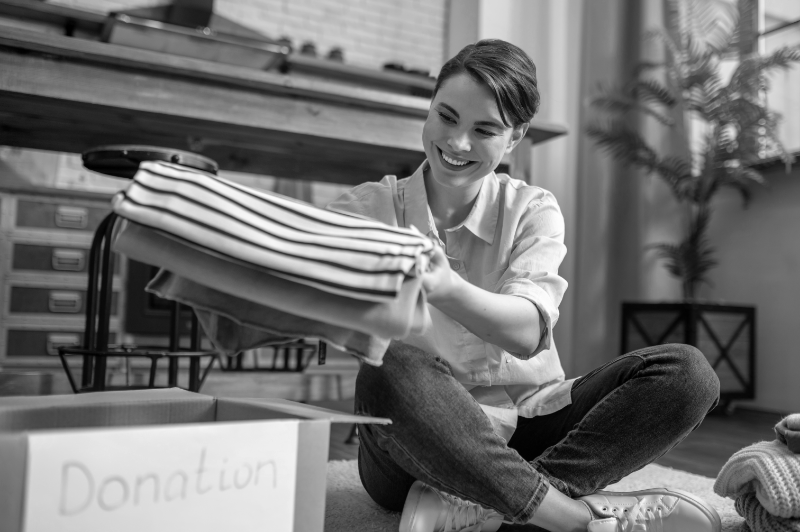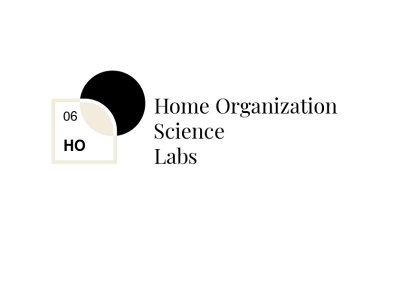Remember that Marie Kondo moment where you held a sock and asked, “Does it spark joy?” Well, those days might be getting a digital remix. The modern world thrives on technology, and its influence continues spreading throughout life. Its connection extends beyond communication and entertainment, seeping into the personal domains, influencing habits and routines, and altering how you approach decluttering.
There was a time when traditional methods like Marie Kondo’s KonMari technique changed how people engaged in decluttering. However, the rise of digital tools and social media influencers has significantly changed this thinking. And while it is important to acknowledge the benefits of these apps and online resources, it’s just as crucial to acknowledge their potential downsides.
This article will explore the effects of technology on decluttering habits and guide you to have a balanced approach. So, dive in and explore the good, the bad, and the downright overwhelming when it comes to technology and decluttering.
The digital age and its impact on decluttering habits
Decluttering is an act of removing unnecessary items from one’s space. It has been a practice for a long time and is recognized as an important component of maintaining a sense of order and well-being. Decluttering traditionally included hands-on methods like manual sorting, organizing, and discarding belongings.
Read more: Smart and Efficient Home Organization: Boost Productivity By Creating Zones
Decluttering habits have changed due to the digital age, which has brought a wave of new tools and practices. This has also given rise to social media influencers and apps that promote minimalist lifestyles. Additionally, digital tools like decluttering apps, online marketplaces for selling unwanted items, and virtual organizing services offer a simplified and easy approach to decluttering.
Read more: Less is More: How Minimalism Transforms Home Organization
While these tools undoubtedly cut down the decluttering process, the effects of technology on decluttering habits go beyond being just useful. Constant exposure to perfectly handpicked, minimalist spaces by social media influencers can trigger compulsive decluttering.
Negative effects of compulsive decluttering
While decluttering has become a popular trend, it has a hidden side. By promoting their picture-perfect lives, social media personalities influence others negatively by implying that life wouldn’t be good if your environment doesn’t live up to their standards.
This can create a compulsive need to declutter, driven by an obsessive need to get rid of things. It can then have several negative effects on mental health and well-being. Some of the negative impacts are:
- Overwhelming pressure. Repeatedly being introduced to perfectly organized and clutter-free spaces online can be overwhelming. This idealized presentation creates feelings of inadequacy and can lead to a desire to recreate an unrealistic lifestyle. This pressure can negatively impact self-esteem and contribute to anxiety.
- Source of distress. Secondly, decluttering can become a source of distress when it shifts from a mindful process to an obsession. In such cases, individuals feel the need to get rid of items constantly, regardless of their emotional connection or the actual need. This constant state of purging can result in a sense of loss and detachment from personal belongings.
- Symptoms of Obsessive-compulsive disorder. In extreme cases, compulsive decluttering can even be a symptom of obsessive-compulsive disorder. An obsessive-compulsive disorder (OCD) is a condition in which people come across intrusive thoughts and anxieties related to clutter, along with the need for excessive order.
Read more: How to Build Self-Esteem in 3 Ways
This repeated cycle of thoughts and anxiety leads to an overwhelming need for excessive order. It can present in behaviors like throwing away possessions or constantly reorganizing their environment.
Navigating the digital declutter
According to a 2017 study, people will only part with their belongings if they can keep a visual memory of them through photos. In other words, people may find it easier to declutter if they can hold onto a photograph of those items as a memento. By saving these items digitally, they can still hold onto the memories linked with them without the need to keep them physically. This approach allows individuals to declutter their physical space while preserving sentimental connections in a digital format.
This insight presents the possibilities of using technology as a tool for a healthy decluttering experience. So, how can you use technology for a healthy decluttering experience without succumbing to the effects of technology on compulsive decluttering? Here are some actionable tips.
Create a balanced digital environment
Technology can be a powerful ally, but the digital world can be a double-edged sword in decluttering. Moreover, the constant shower of information and organizational apps can overwhelm and lead to decision fatigue. Here’s how to use technology responsibly.
- Utilize technology responsibly. You can start by choosing a few apps that address your specific needs instead of downloading multiple decluttering apps and confusing yourself. For example, get to-do list apps, habit tracking, note-taking, and not many more. Additionally, unfollow accounts that promote unrealistic decluttering goals.
- Set boundaries. The next step is to set a specific time of your day to engage in decluttering activities, participate in digital detox, or limit your exposure to minimalist content that might pressure you to declutter excessively. Digital detox is a temporary break from technology, allowing you to refocus. Some ways to engage in digital detox are limiting your screen time for a set period (an hour in the day). Additionally, you can turn off your notifications and select tech-free zones in the house, like in the bedroom or dinner table.
- Focus on functionality. It can be easy to get caught up in the aesthetics of decluttering apps. Therefore, look for tools that cater to your specific needs, whether a simple checklist app or a comprehensive organizing platform. Functionality over fancy visuals is key.
Read more: The Transformative Power of a Digital Detox
Consume digital content mindfully
As you scroll through your social media posts, you may encounter many decluttering advice and resources. While most are informative and helpful, sometimes they can be tiring. Navigating this space requires a mindful approach to avoid pressure and guilt.
Therefore, you must know how to use these to your benefit without negatively affecting your mental health. Here are some ways to get started on the decluttering process.
- Understanding the nuance. To declutter, embrace the core principles of minimalism, which are living with purpose and focusing on what truly matters. For example, while decluttering your kitchen, focus on the items that matter or are most useful to you, making sure that you discard old items like a spoon or a gadget that no longer serves the purpose.
- Curate your feed. Start by following accounts with positive and realistic decluttering advice that aligns with your goals. Keep in mind that you don’t have to follow every decluttering tip you see online; you can tailor decluttering strategies to your lifestyle and priorities.
- Focus on progress, not perfection. Finally, remember to celebrate your decluttering achievements, no matter how small. Don’t compare your journey to the picture-perfect decluttering stories you see online; this is unrealistic and not relatable.
Leverage digital tools for mental health
Decluttering isn’t just about clearing the physical space but also about having mental clarity. It can also sometimes be emotionally demanding, especially if you must let go of things that hold some of your precious memories. Here’s where technology can provide valuable support for mental well-being during decluttering.
- Mindfulness apps. While decluttering, you may encounter a wave of emotions, such as nostalgia, guilt, or even anxiety. In such situations, mindfulness apps can be a great resource for managing these feelings, as they offer guided meditations and breathing exercises. These will help you stay present in the moment and make clear-headed decisions about what to keep and discard.
- Online therapy platforms. Sometimes, the underlying reason for clutter goes beyond a simple dislike of tidying up. It could be linked to emotional attachment to objects, hoarding tendencies, or even depression. Online therapy platforms offer a convenient and accessible way to connect with licensed therapists who specialize in helping individuals declutter and address the emotional issues contributing to clutter.
- Decluttering support group. Decluttering can feel isolating, especially when you are facing a mountain of possessions. Therefore, joining a decluttering community app can provide you with much-needed support and motivation. Sharing experiences, offering encouragement, and celebrating each other’s decluttering victories can make the process feel less daunting.
Read more: Reaching a Higher Sense of Self Through Mindfulness
In conclusion
Technology’s influence on decluttering habits is helpful if used mindfully. So, use technology as a tool to support your personal decluttering journey and avoid using it as a pressure cooker to achieve an unrealistic ideal.
Now, as you navigate your decluttering journey, remember to take a deep breath and remind yourself to focus on balancing this habit. Be mindful of your relationship with technology and seek support if you require a little extra help. Approach your compulsive decluttering habits with empathy and understanding. Finally, remember that a little clutter doesn’t have to control your life.
If you would like to see more resources on compulsive decluttering, check out the Home Organization Science Labs. The lab uses the research of the Institute for Life Management Science to produce courses, certifications, podcasts, videos, and other tools. Visit the Home Organization Science Labs today.
Photo by zinkevych on Freepik



